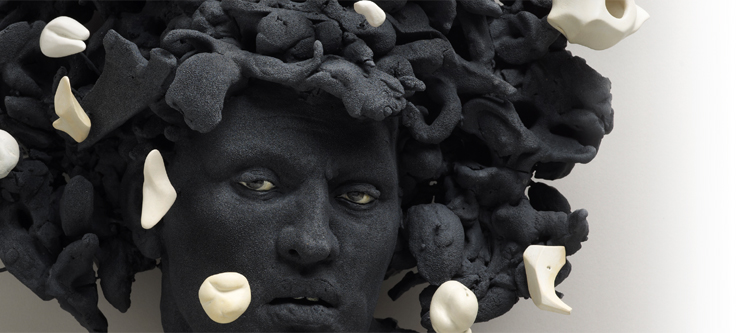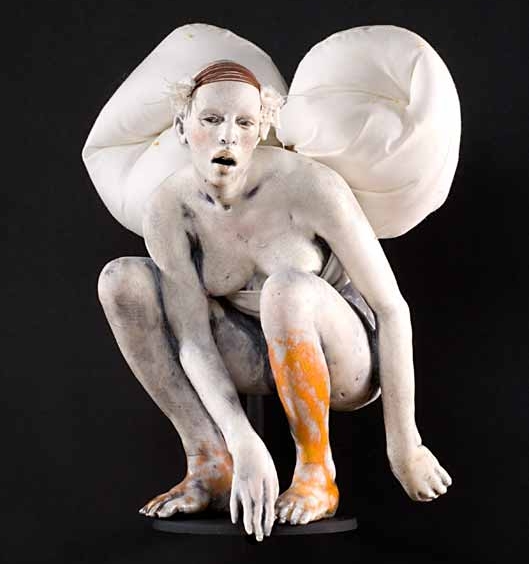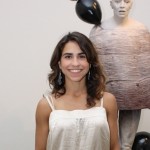Thu 30 Dec 2010
Entre Tierra – Ceramic Art of Cristina Córdova
Posted by A.A. under Art, Sculpture
[6] Comments
©2009-2010 Cristina Córdova
I began this post a year ago and never published it because I continue to feel that there is still some yet unexpressed aspect of Córdova’s work that I had not adequately described. Her ceramic images evoke in me the Phaedrus, in which Plato described the fall of the soul. They also evoke the River Styx, which for the Greeks formed the barrier between Earth and the Underworld. Her forms arise from that same psycho-emotional space from which our mythologies emanate. A space where only metaphors have meaning and geometric forms arouse our proto-memories to something distant and yet familiar.
©2009-2010 Cristina Córdova
Others have described her work as “Primitive Latin American” and perhaps it is. However, it is my opinion that her work is not specifically Latin; in my estimation its true power, much like all of the Great Myths, is in it’s universality. Her figures appear much as we may at times perceive ourselves; disconnected, disheartened and distracted by the weight of all that binds our souls.
©2009-2010 Cristina Córdova
Córdova was a dancer for 15 years and has expressed the impact of dance on her work. She effectively brings a sense of physicality to the presentation of her art, utilizing geometry, motion and body language to enable a kind of sign language of the soul that speaks without words.
Cristina Córdovais a studio artist living in Penland,NC. Originally from Puerto Rico, she received her BA from the University of Puerto Rico in Mayaguez and went to earn her MFA from the New York State College of Ceramics at Alfred University. In 2005 she concluded a three year residency at Penland School of Crafts in North Carolina. She was the recipient of an American Craft Council Emerging Artist Grant as well as a North Carolina Arts Council Fellowship Award. She has taught workshops in Puerto Rico and the US.
More:
CristinaCordova.com
6 Responses to “ Entre Tierra – Ceramic Art of Cristina Córdova ”
Trackbacks & Pingbacks:
-
umbrella vending machine
blog topic
-
Glenna Nirmaier
blog topic



By changing into a not all that terrible blogger, you can genuinely make a favored position off your site by appropriating content that isn’t just high in quality, yet nearby in whole, by doing this, you will muaveso expand the fervor of both affiliation backs and referrals, which is the methods by which you will profit.
I never knew that art is really an in-depth part of human’s passion and credit to Cristina for having this artistic work.
Latest News FIFA World Cup 2018 in Russia
I found your blog ( http://spillspace.com) and interested in paid post. Let me know if you are interested then I will give you more details.
I can offer you best to make it worth your time.
Regards
Hi there! Someone in my Myspace group shared this site with us so I came to take a look. I’m definitely loving the information. I’m book-marking and will be tweeting this to my followers! Great blog and great style and design.